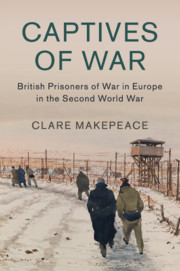Book contents
- Captives of War
- Studies in the Social and Cultural History of Modern Warfare
- Captives of War
- Copyright page
- Dedication
- Contents
- Illustrations
- Acknowledgements
- Abbreviations
- Introduction
- 1 Capture
- 2 Imprisoned Servicemen
- 3 Bonds between Men
- 4 Ties with Home
- 5 Going ‘Round the Bend’
- 6 Liberation
- 7 Resettling
- Conclusion
- Book part
- Bibliography
- Index
- References
Bibliography
Published online by Cambridge University Press: 25 October 2017
- Captives of War
- Studies in the Social and Cultural History of Modern Warfare
- Captives of War
- Copyright page
- Dedication
- Contents
- Illustrations
- Acknowledgements
- Abbreviations
- Introduction
- 1 Capture
- 2 Imprisoned Servicemen
- 3 Bonds between Men
- 4 Ties with Home
- 5 Going ‘Round the Bend’
- 6 Liberation
- 7 Resettling
- Conclusion
- Book part
- Bibliography
- Index
- References
- Type
- Chapter
- Information
- Captives of WarBritish Prisoners of War in Europe in the Second World War, pp. 259 - 284Publisher: Cambridge University PressPrint publication year: 2017



